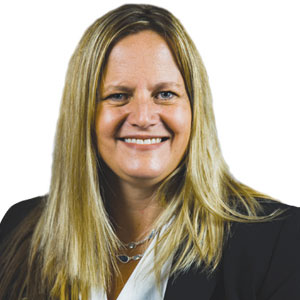THANK YOU FOR SUBSCRIBING
Editor's Pick (1 - 4 of 8)

Data Driven Operations: Evolving the facilities management model
Leon Wurfel, CEO & Founder, BUENO Systems


Leon Wurfel, CEO & Founder, BUENO Systems
There is the opportunity for a shift in the property sector to better adopt and utilize technology in how we operate our buildings. The reality is that the current market best practice operational model (“preventative”) is at its root nothing more sophisticated than using a calendar to manage the engineering systems in our buildings. Daily, weekly, monthly and quarterly checklists are accepted best practice which means that a huge amount of effort is expended every year, in every building, across every engineering service before we even “turn a wrench” to fix a single piece of equipment, let alone do something to improve the performance of the assets. There is a better way.
The data-driven operational model
To build this model shift into a business’ operational strategy there are a few ways to go. The approach that an organization would take would sit somewhere on the following spectrum:
● A centralized operations centre function that directs detailed activities. This type of approach is suited to portfolios with a high volume of sites, or sites with high complexity, or both.
● A distributed, self serve model which can supplement the existing workflows of the operational stakeholders to do various day to day tasks smarter. This is a lower overhead model that is more suited to lower volume or lower complexity properties.
The point here is that these types of solutions aren’t just for the premium grade assets, different solutions can be shaped to be appropriate. The barrier to entry is adjustable.
Why
The first question that should be answered for this type of approach is “why?”. There aren’t many organizations in the world that have the resources to do a speculative exploration of this type of model, so it is important to establish success criteria and to do it before we start. The why can be different depending on the different pressures faced by an individual organization, but the general types of drivers that we all run into are:
● High energy costs or aggressive sustainability goals. Energy efficiency is still the number one reason that organizations make the initial investment into these types of solutions. Split incentives (passing on energy/ operational costs) can be barriers but many organizations (typically REITs) that suffer from split incentives have other pressures to satisfy sustainability objectives.
● High labor/maintenance costs. The business case for automation is best in countries with high labor costs. Where people can afford to staff their buildings with teams of operators manually controlling plant operation, the value case to justify data-driven operations doesn’t exist.
● Low skills availability. The business case for autonomous building operations is best in countries with a combination of high labor costs and low skills availability. Many countries have aging populations of facility managers (the average age in Canada, for example, is 60 years old) and the talent pool for new hires is typically non-technical (security guards, cleaning supervisors, concierges, etc) rather than what has historically been a trade heavy pipeline.
● High focus on occupant experience. Different facilities have different pressures on managing occupant experience. The vertical transport at a casino or entertainment venue is of high criticality, whereas thermal comfort can be more important in an office environment.
● A broader digitization strategy. Some organizations that we work with have a strategic mandate to digitize their operations to protect their leadership position or else to differentiate the product that they are selling (e.g. data-driven maintenance vs preventative maintenance).
How to build the strategy
Once the success criteria is defined, the next step is to look at various facets of your property portfolio to assess the feasibility of the different strategies that are available.
Important considerations are:
● Definition of the high value use cases. What are the top 2-3 tangible improvements that you are going to make to operational tasking? What is the value associated with these?
● Existing automation/instrumentation. How much existing instrumentation can be leveraged from the automation systems at the building? If the existing systems are older and proprietary, the data is more expensive to ingest, if there is no existing automation, then an IOT type of approach will be needed.
● Engineering standards. Data must be cleansed and structured before any value can be extracted. If the existing assets have strong engineering standards around their installation, then there is significantly less work to onboard them. This means that for a given budget you can get more results.
● IT infrastructure. The sophistication of the existing IT infrastructure (from managed networks to fully private networks) can provide opportunities to make the solution more scalable.
● Security. Not much needs to be said here other than that any organization going down this path should be assessing the cybersecurity risks of any solutions that they consider.
● Enterprise systems. The end goal for this type of approach is to integrate the data-driven “engine” with the existing workflows of an organization to minimize the barriers to action/value. A solution should be designed with ERP/CMMS integration in mind.
The most important thing is to test different approaches. Run multiple iterations of scopes and vendors to identify the best engagement model and use the evidence from these proof of concepts to inform your business case.
In summary
The property industry has been on a journey for the past 6 years. Tools that were once purely the domain of delivering energy services are now available for disrupting the core operational model of all engineering services within the property industry. At its root, the brain of the current best practice operational model is really just a calendar and some checklists, it’s time for the property industry to close the gap to the rest of the world.












